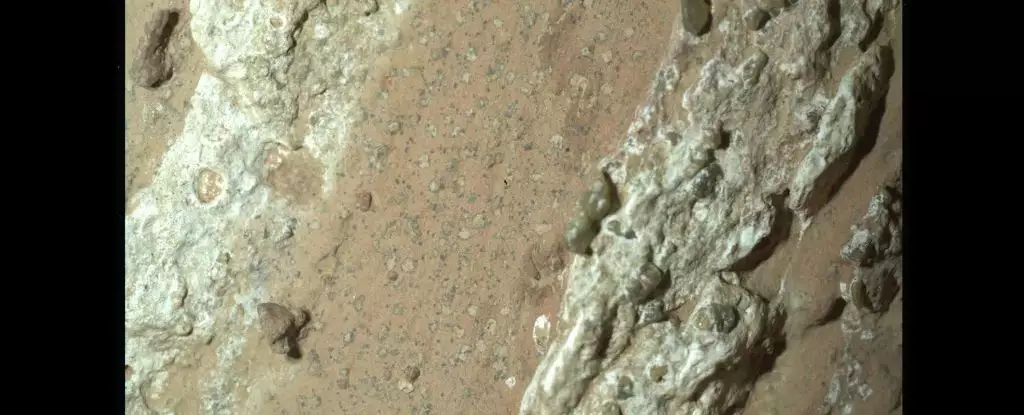The recent discovery made by the Perseverance rover on Mars has sparked renewed interest in the possibility of life beyond Earth. Named Chevaya Falls, this rock on the edge of an ancient river valley has presented scientists with compelling evidence that it may have hosted life-supporting chemistry billions of years ago. The presence of organic compounds and distinctive leopard-like spots hint at the potential for chemosynthetic microbes to have thrived in this environment.
The veiny sedimentary material found in Chevaya Falls contains organic compounds that are often associated with the fossilized record of microbes on Earth. These features, coupled with the presence of leopard-like spots indicative of chemical reactions that could have been used by microbial life for energy, point to a complex and potentially life-sustaining environment in Mars’ distant past.
Scientists have long speculated about the possibility of life on Mars given the presence of water and the right chemical conditions for life to emerge. The discovery of Chevaya Falls adds to the growing pile of evidence suggesting that Mars could have been hospitable to microbial life. The conditions on Mars would have been similar to those that gave rise to the first life on Earth – optimized for low to no-oxygen environments.
Part of Perseverance’s mission is to search for signs of past life on Mars by studying sedimentary rocks in areas that were once wetlands. The rover’s discovery of Chevaya Falls represents a significant milestone in this quest, as it provides the strongest evidence of potential biological signatures on Mars to date. The presence of organic, carbon-rich material in the rock further adds to the intrigue surrounding this discovery.
The unique features found in Chevaya Falls, such as the banded layers of calcium sulfate, seams of hematite, and leopard-like spots, hint at complex geological processes at play. While some of these features could be explained by non-biological mechanisms, the combination of organic material and distinctive mineral formations suggests a more nuanced history for this Martian rock.
Perseverance’s analysis of Chevaya Falls has opened up new avenues for exploration and discovery on Mars. The rover’s collection of a sample from the rock, which is waiting to be retrieved by a future spacecraft, holds the promise of revealing even more insights into Mars’ ancient past. This discovery may serve as a catalyst for future human missions to Mars, as the mysteries of Chevaya Falls beckon us to explore the Red Planet further.
The discovery of Chevaya Falls on Mars highlights the tantalizing possibility of past life on the Red Planet. The complex geological features and organic compounds present in this rock point to a rich history that has yet to be fully understood. As we continue to unravel the mysteries of Mars, the legacy of Chevaya Falls stands as a testament to the enduring quest for knowledge and exploration beyond our own world.


Leave a Reply